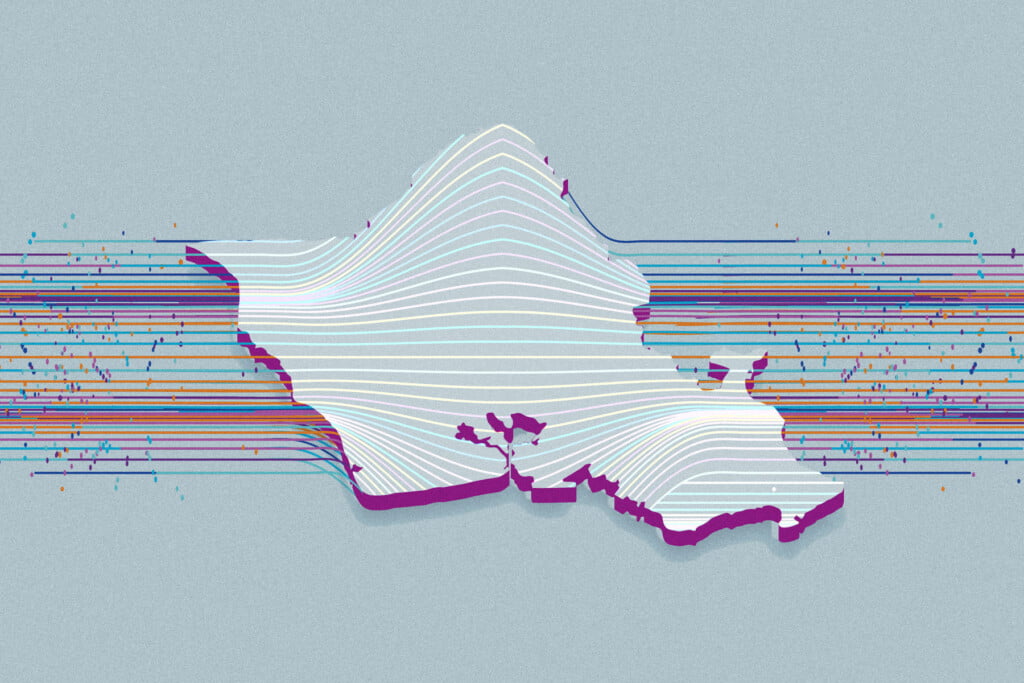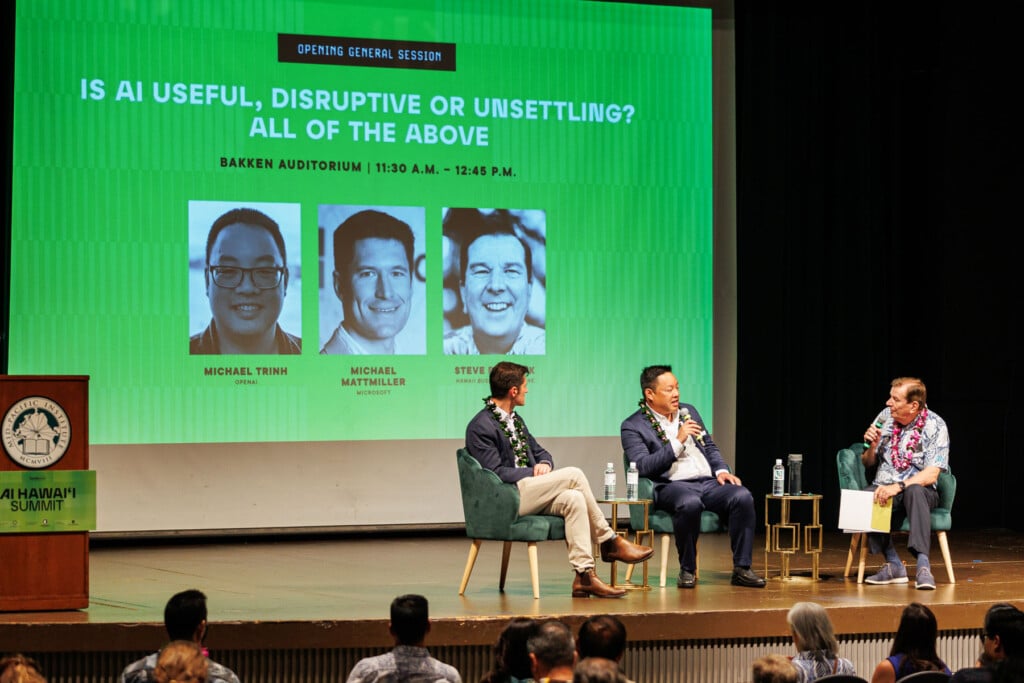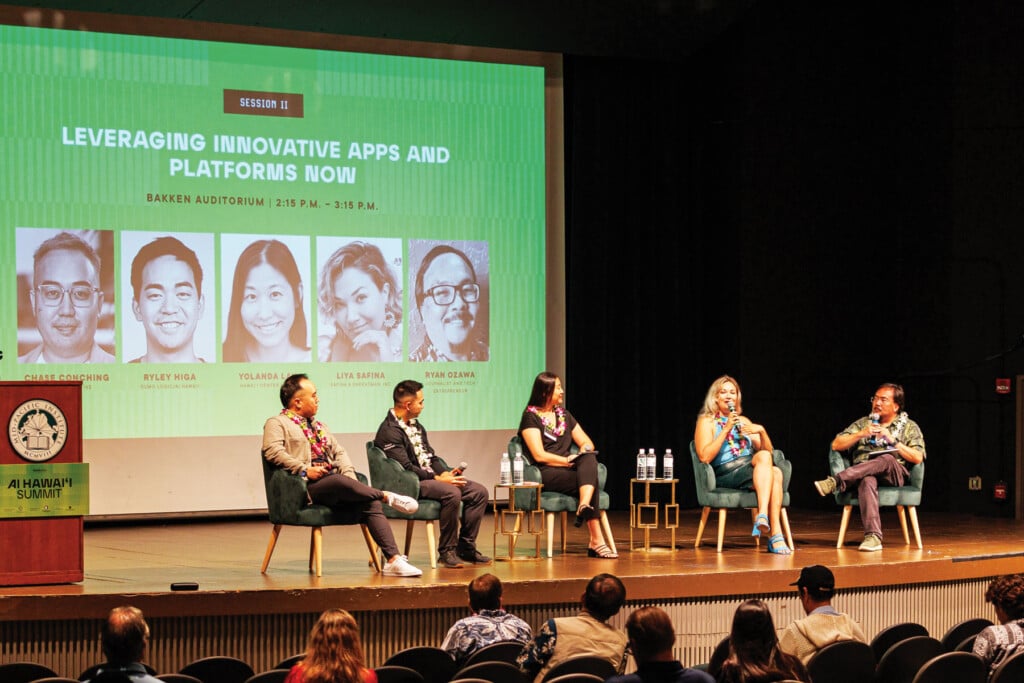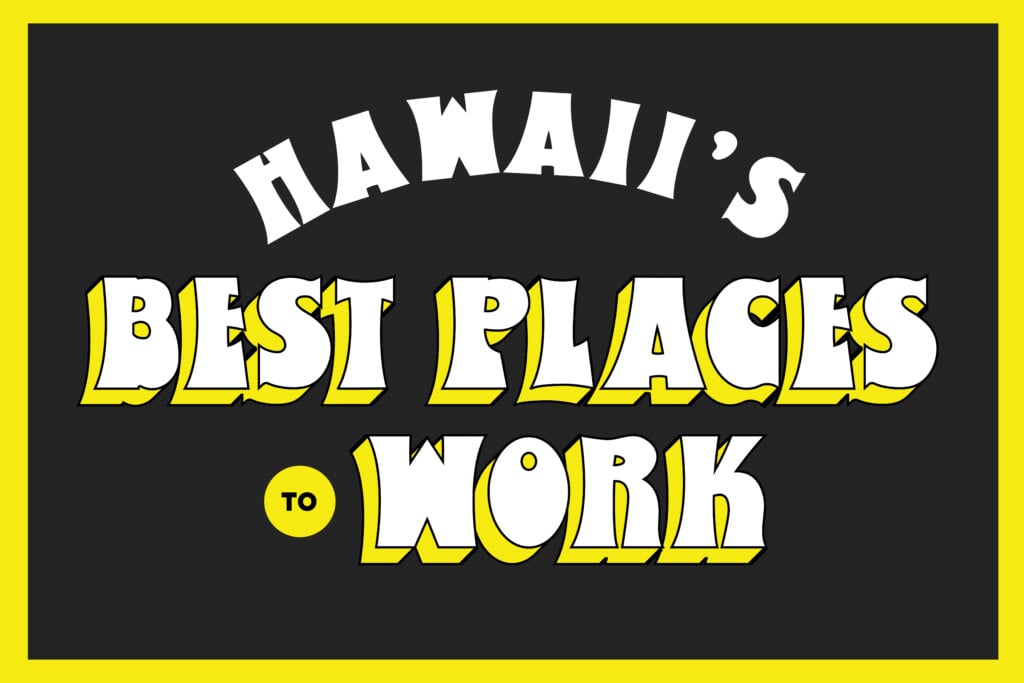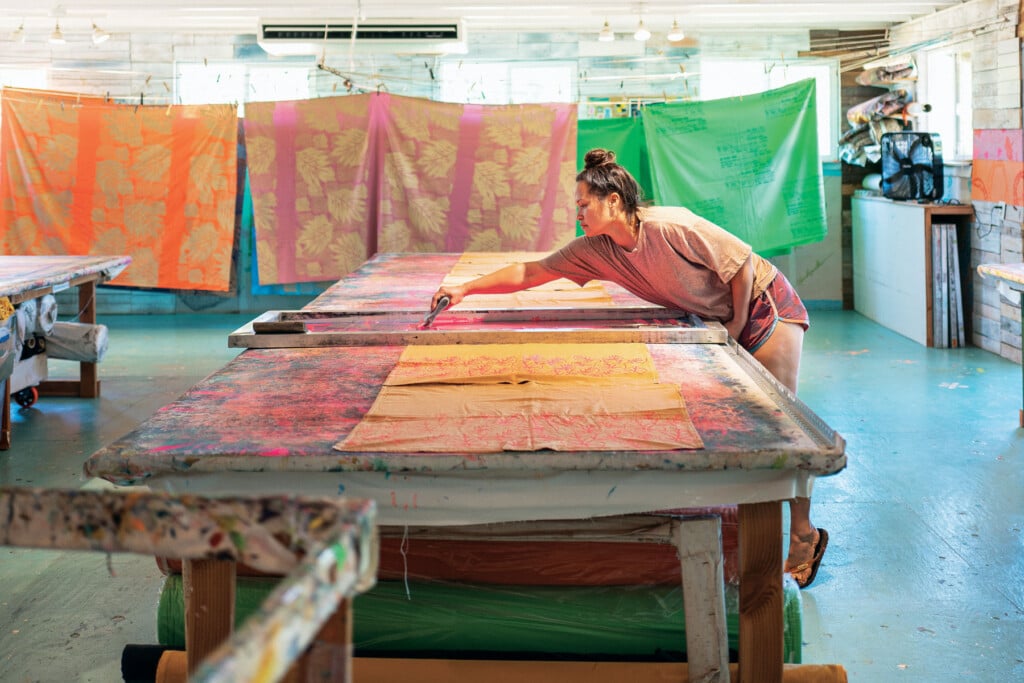UH Hilo: Hawaii’s Under-the-Radar Hotbed of Innovative Research
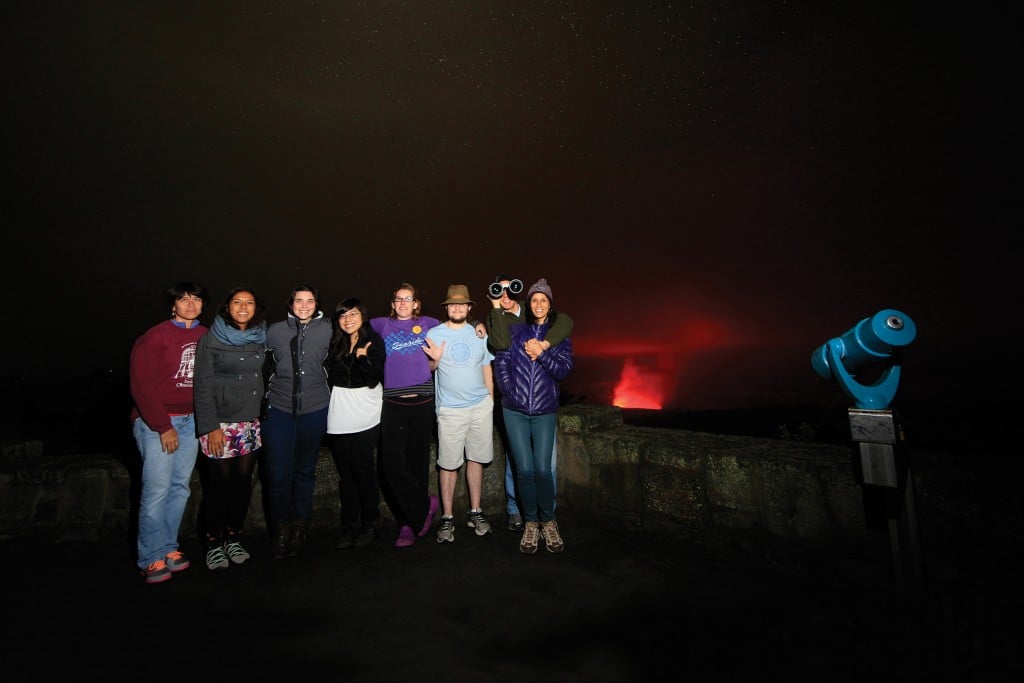
Among the faculty and administrators I spoke with, there is a strong consensus that UH Hilo deserves to be recognized as an innovative research and educational center in its own right.
“We’re a small but comprehensive university,” says Matthew Platz, vice chancellor of academic affairs. “You’ll see cutting-edge scholarship in all areas: indigenous language, aquaculture, unmanned aerial vehicles, astronomy, environmental science, evolutionary biology, the social sciences. I’ve been here a little over two years and I fell in love with this university very quickly. It’s a jewel. There is so much to be proud of here.”
When we shined the light on the younger sibling, here are some things we found.
SPECIALIZATION AROUND HAWAII’S UNIQUE ECOLOGY
From UH-Hilo, it’s a 10-minute drive to the ocean, 30 minutes to active lava flows and just over an hour to the summit of Mauna Kea. “The ability to get students out into the living laboratory is our greatest advantage,” Platz says. “Scholars come here to live and work because they can do their research better here than anywhere else in the world. If you want to study lava flows, what better place to work? If you want to be an astronomer, what better place to be?” says Platz.
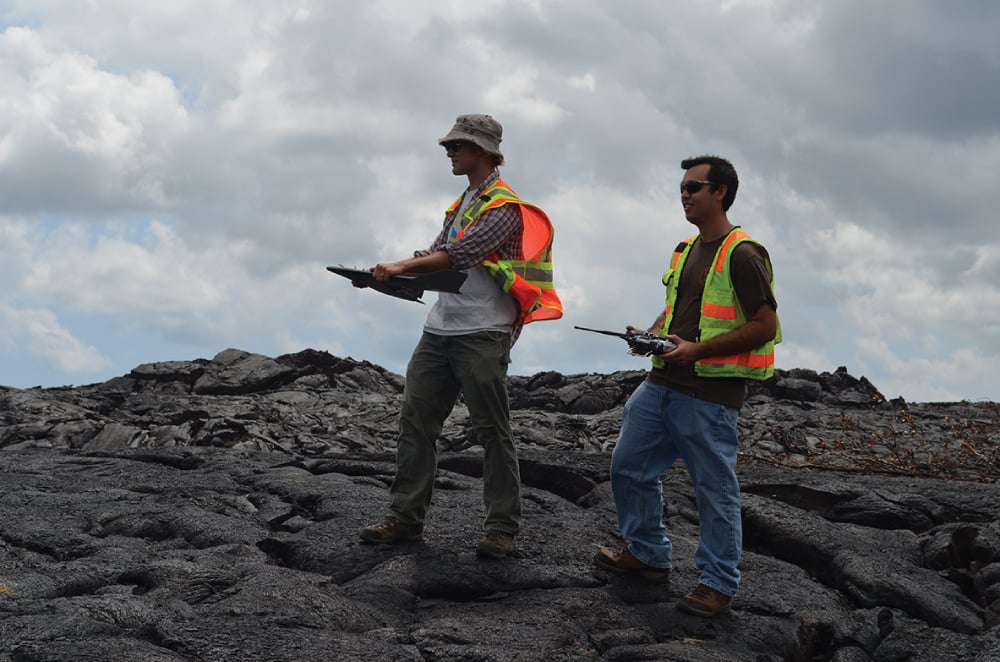
“Anything we can add to better predict lava flows is welcome.” says Ryan Perroy, assistant professor in UH Hilo’s Dept. of Geography. He is shown holding an unmanned aerial vehicle that he uses to study lava flows. Photo courtesy Kevn Krajick/Earth Institute, Columbia University.
Marianne Takamiya, chair of the Department of Physics and Astronomy, describes Hawaii Island as a mecca of astronomy. “Mauna Kea is unique because we are sitting in the middle of the Pacific Ocean,” she says. “The air flowing through the islands is very calm. One can compare it to a sheet of paper as it hits Mauna Kea, and we get this stable air. When we look up, we don’t see much twinkling, which means we can see much clearer.”
Takamiya’s projects include comparing phenomena that occurred several billion years ago to the more recent past, to measure how the universe is becoming more inactive and “sluggish” in terms of star formations. Her research also makes use of quasars, which are extremely luminous, as light posts to investigate what happens to be in their path.
Hilo students can potentially get time with any of the 13 telescopes on Mauna Kea when working with faculty at UH-Hilo, the UH-Manoa Institute for Astronomy office in Hilo or astronomers from the observatories – opportunities that no other astronomy program can provide, Takamiya says. “We can bring students up to the summit to use the Gemini or Subaru or Keck telescopes. What other undergraduate program can do that?”
Ryan Perroy, assistant professor in the Department of Geography, is applying one of the hottest new technologies to a very hot natural phenomenon: the Pahoa lava flow. Using unmanned aerial vehicles (UAVs), he is working with the Hawaii County Civil Defense and the U.S. Geological Survey’s Hawaiian Volcano Observatory to collect data and images of active lava flows. Perroy emphasizes this is still a proof-of-concept project, but, so far, the biggest benefit of using UAVs is they collect data more quickly over a larger area than the traditional method: researchers hiking around a flow. The data helps create three-dimensional views of the topography and how lava flows change. His work might lead to changes in scientific research methods and could potentially help communities in the path of the lava.
“There have been voluntary evacuations and businesses closed down, but then the lava has not advanced. There is so much uncertainty associated with what lava flows are going to do. Anything that we can add to better predict lava flows is certainly welcome,” Perroy says.
Maria Haws, associate professor of aquaculture, wants to help Hawaii become less dependent on imported seafood. “We import over half of our seafood. That’s a huge drain on the state,” she says. “We’re working on more angles to produce our own seafood in a sustainable manner.”
Toward that end, her research has contributed to bringing shellfish farming back to Hawaii after a 26-year hiatus. As director of the Pacific Aquaculture and Coastal Resources Center, Haws works with industry partners, such as Hawaiian Shellfish LLC in Keaau, to develop clean, sustainable and zero-impact oyster hatcheries.
The center brings in about $1 million a year in research and training grants, which support seven employees and 25 students as part of an aquaculture workforce program. For Haws, UH-Hilo offers an opportunity that is unmatched elsewhere. “They opened their doors and created an enabling environment for myself and my colleagues, so that we could bring in millions of dollars to the Big Island. That flexibility to allow people to do research and work with local businesses distinguishes UH-Hilo. Our industry is small now, but there’s lots of potential for millions of dollars of revenue in the future.”
COMMITMENT TO THE COMMUNITY
“The real mission for the university is to produce students who will live in and drive our community,” says Sharon Ziegler-Chong, director of Pacific Island Programs for Exploring Science. “But they can’t do that if our programs are separate from the community. So our office supports more of those connections.” PIPES designs programs to connect underrepresented undergraduates, especially Native Hawaiian students, to internships with agencies and organizations that are focused on natural-resource management and conservation. PIPES provides 35 to 40 internships every summer and is looking for more partner organizations.
“We create an experience for students that feeds their desire to participate in relevant and meaningful conservation and resource-management work in Hawaii,” says Ulu Ching, internship coordinator at PIPES.
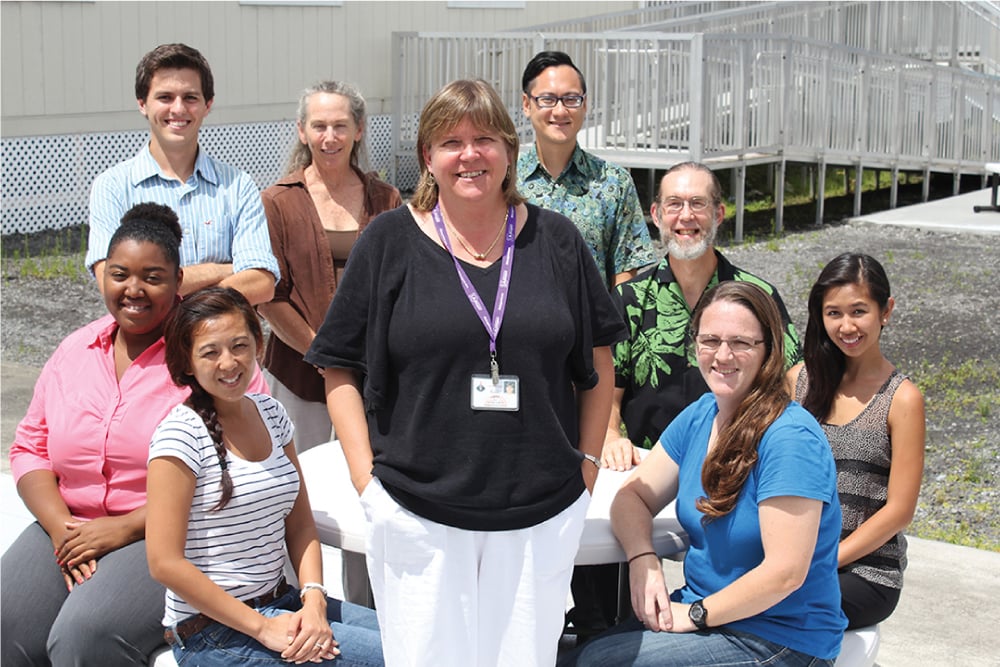
Sue Jarvi (center) who helps lead the Hawaii island Rat Lungworm Working Group, is joined by, clockwise from Jarvi’s right: Ann Txakeeyang, LaTasha Riddick, Michael Severino, Kay Howe, Akio Yanigisawa, Steven Jaquier, Jill Villarosa and Peggy Farias. Photo courtesy Daniel K Inouye College of Pharmacy.
Deep community engagement is evident across UH-Hilo. Susan Jarvi, director of the Pre-Pharmacy Program and professor of pharmaceutical sciences, has teamed up with 15 researchers and volunteers to form the Hawaii Island Rat Lungworm Working Group, which engages in research and educational efforts.
Slugs and snails eat the feces of infected rats. The disease, she explains, is transmitted when people accidentally ingest these tiny infected slugs or snails, typically when eating improperly washed produce. Once humans ingest them, the worms burrow through their intestines, making their way to the central nervous system and brain.
Typical symptoms include severe headaches and flu-like conditions. In rare cases, the disease can cause comas, nerve damage and even death. Over 90 percent of the reported cases have originated in the Puna and Kau districts of Hawaii Island.
To foster greater awareness within these communities, Jarvi has helped publish a children’s book. About 8,000 copies have been distributed so far, but Jarvi is seeking funding to print more. “Education is critical. If you know about it, you can act accordingly,” she says.
Jarvi’s work is among the many extensive efforts that connect the 10-year-old College of Pharmacy to the local community. An annual health fair at Prince Kuhio Plaza, organized by students and faculty, attracted thousands of people in October. “We’re extremely embedded in the community and work to be very visible as well so people can get to know the students and learn what the college is all about,” says Maggie Morris, the college’s public information officer.
Another College of Pharmacy program, Pharm-2-Pharm, is creating a model in which patients discharged from hospitals receive ongoing care from community pharmacists. This program is supported by a $14.3 million grant from the federal Centers for Medicare and Medicaid Services. “In addition to improving the health and well-being of the patients, this program is designed to reduce healthcare expenses, delay or prevent hospital re-admissions and, potentially, establish a model that could be adopted throughout the nation,” says John M. Pezzuto, professor and dean of the college.
INFLUENCE BEYOND HAWAII
While UH-Hilo’s faculty aim to distinguish themselves with their focus on local communities and ecological resources, their influence extends beyond the state. The College of Hawaiian Language is well-known as having the only graduate degree program in an indigenous language in the U.S. – part of its mission is to increase understanding of Hawaiian culture and active use of the Hawaiian language. The college offers education in Hawaiian starting with preschool at its Nawahiokalaniopuu Laboratory School, all the way to a Ph.D. in Hawaiian and Indigenous Language and Culture Revitalization. William H. “Pila” Wilson, professor of Hawaiian language, Hawaiian studies and linguistics, is recognized internationally for his work in language revitalization. “We’ve worked with American Indians. We’ve worked with indigenous groups from Australia and Taiwan. The other day, we hosted a group of Puebla from Santa Clara. And right now, we have applicants from Guam, Alaska, Barcelona, New Zealand and the Mohawk tribe of Canada,” Wilson says. “We’re a small program, but we do all we can to share our experiences with others around the world looking to revitalize their language and culture.” Keith Edwards, chair of the Department of Computer Science and Engineering, makes it a priority to get his students involved in national and global competitions.
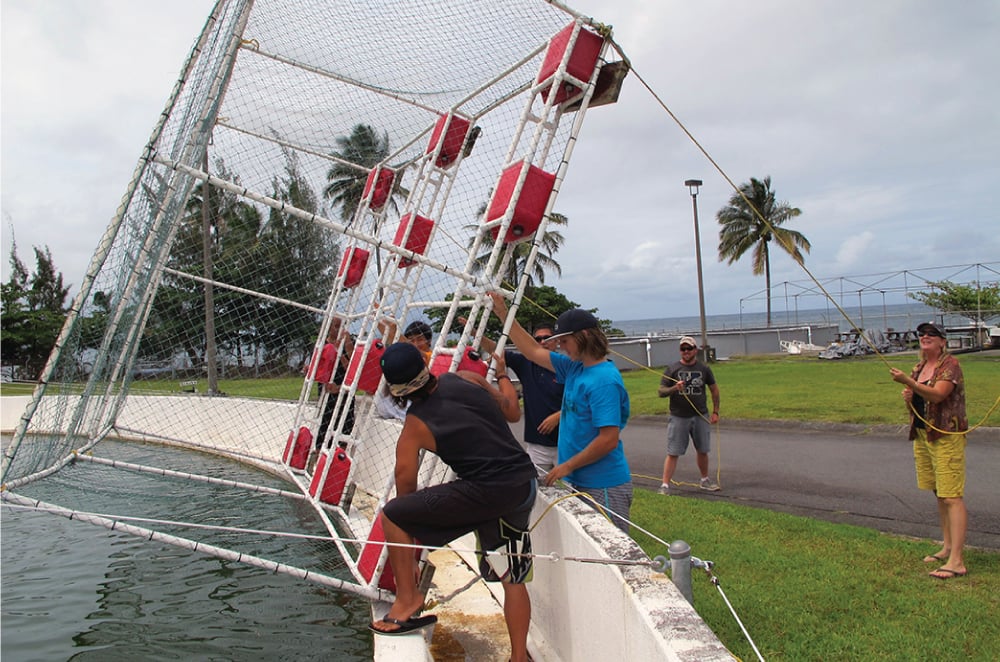
Students work at the Fish Lab at UH-Hilo. Photo courtesy CAFNRM
“I want my students to be better than I am, and these contests give them that opportunity. By the time they are seniors, I want them to get to the point where they exceed my capabilities,” he says.
Edwards’ strategy is paying off. Over the last few years, students from the department have placed in the semifinals in IBM’s Master the Mainframe competition, and have won the Hawaii site competition for the Association for Computing Machinery’s International Collegiate Programming Contest.
The Microsoft Imagine Cup is another prestigious student technology competition. In 2012, a team from Edwards’ department won the U.S. National Championship with its project “Help Me Help,” a mobile phone app for aiding communities and disaster response personnel during major disasters. This year, another team placed first in the pitch video portion of the competition with its gaming concept, and is moving on to compete in the U.S. finals. “We’re much smaller than Manoa, but we do equally as well in these contests. This is one way our department can stand out among the 10 campuses in the UH system,” says Edwards.
Other UH-Hilo professors are gaining recognition for research that touches on national issues. Psychology professor Bartley Christopher Frueh is regularly cited in publications such as the Wall Street Journal, the Los Angeles Times, The Economist and Men’s Health for his work on post-traumatic stress disorders among veterans. His research investigates which of the different models of disability treatment leads to better mental-health outcomes for veterans. But his work does not just stay in the ivory tower – he is also active in recommending policy. He recently discussed his findings with Australian leaders and is no stranger to Capital Hill. “I’ve been to theU.S. Congress about five or six times over the last 10 years, talking to folks about veterans’ issues. It is,” he acknowledges, “a hot-button topic for politicians.”
Thom Curtis, professor of sociology and chair of the Social Sciences Division, is also sought out by national decision makers for his research, which focuses on the evolution of terrorists. Curtis investigates their psychological development and the factors that have contributed to the radicalization of Muslims in the U.S. and Europe. Not surprisingly, his work has drawn attention from government agencies, seeking out his scholarly approach toward an important and complex topic. A few years ago, he was awarded a grant by the Department of Homeland Security to develop a college-level teaching program on terrorism.
That’s not easy, he acknowledges. “This is a realm in which things change so quickly that by the time a textbook is printed, it’s out of date. Our challenge is in creating reliable resources for academics.”
COLLABORATIONS ACROSS TRADITIONAL SILOS
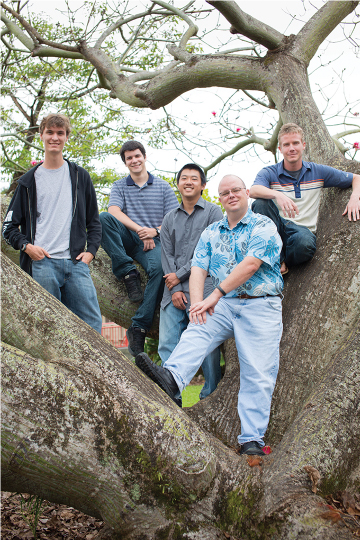 “The way this program was designed originated partially out of necessity – we just don’t have as many faculty in one department as Manoa does. But the benefit is that, for a lot of jobs, you need to know more than just one field and to be able to talk to people in other disciplines. That is our niche. That is our advantage. We train students to have a broader perspective,” says Donald Price, director of the Tropical Conservation Biology and Environmental Science graduate program.
“The way this program was designed originated partially out of necessity – we just don’t have as many faculty in one department as Manoa does. But the benefit is that, for a lot of jobs, you need to know more than just one field and to be able to talk to people in other disciplines. That is our niche. That is our advantage. We train students to have a broader perspective,” says Donald Price, director of the Tropical Conservation Biology and Environmental Science graduate program.
The TCBES master’s program includes access to faculty specializing in biology, marine science, geography, agriculture and forestry, chemistry, geology and anthropology. In addition, the program works with several agencies, such as the National Park Service, many of which employ Ph.D.s locally, who often become affiliate faculty. TCBES students thus have access to over 80 other Ph.D.s in addition to full-time faculty.
The program was recently awarded its second $5 million grant from the National Science Foundation. The eight or nine faculty members the grant supports conduct research on projects related to how native and introduced species compare in adapting to environmental changes. The interdisciplinary focus means the research spans multiple scientific levels – “from the ecological level all the way down to the genetics and genomics levels to understand why some organisms adapt and others do not,” says Price.
Bruce Mathews, dean of the College of Agriculture, Forestry and Natural Resource Management, also does not believe in siloed education.
“Historically there are electrical engineers who work on solar energy,” he says. “Or environmental engineers who work on transforming waste into biofuel. But there is no degree program that really puts together all the alternative energies for students to gain an integrated perspective.”
Towards that end, the department recently brought in Shiwu Sung. His expertise is in transforming waste to energy and in the possibilities of using salt-tolerant coastal plants as biofuel. Sung’s mission is to help create an energy-science program – an integrated approach toward all forms of alternative energy. Such programs are catching on in Europe, but Hilo’s would be among the first in the U.S.
Mathews says there is no better place for such a program than Hawaii Island, with its access to solar, wind and geothermal energy, and ocean thermal energy conversion.
“In one’s lifetime, you try to find opportunities to make a difference,” Sung says. “This is the place for that. Hawaii is a state that has an incredible interest in renewable energy, and an imperative to develop it. This state can become a model for the world.”
WHERE EVERYBODY KNOWS YOUR NAME
While the faculty and administrators I met all agree that UH-Hilo deserves more of the spotlight than it gets, they also emphasize that students benefit from being part of a smaller campus that flies under the radar.
“It’s really tight knit here since there aren’t a lot of us. CS people are infamous for being highly competitive and snarky, but everyone here helps each other out,” says Teddy DeRego, a junior in the Computer Science Department. He is currently getting his project ready for the next round in the Microsoft Imagine Cup, after his team won first place in the video pitch portion.
Drew Martin, professor of marketing, describes UH-Hilo as providing the quality of a private-school education for a public-school price. Maria Haws, associate professor of aquaculture, echoes that sentiment. “I’ve been doing recruiting for UH-Hilo on the side and one thing I’ve realized is that we offer a high-value education here, yet our tuition is low. People also see all of the innovative research we are doing. All of this gives us a huge competitive edge.” Vice chancellor Platz acknowledges UH-Hilo may not be as well known to the general public for its innovative research as it should be. But, he stresses, what is important is that students are getting the attention they need.
“Sixty percent of our classes have 20 or fewer students,” he says. “This is a place where students develop personal connections to faculty and staff. They are not just one of hundreds of students sitting in a theater-based class. This is a place where everyone can know your name.”
